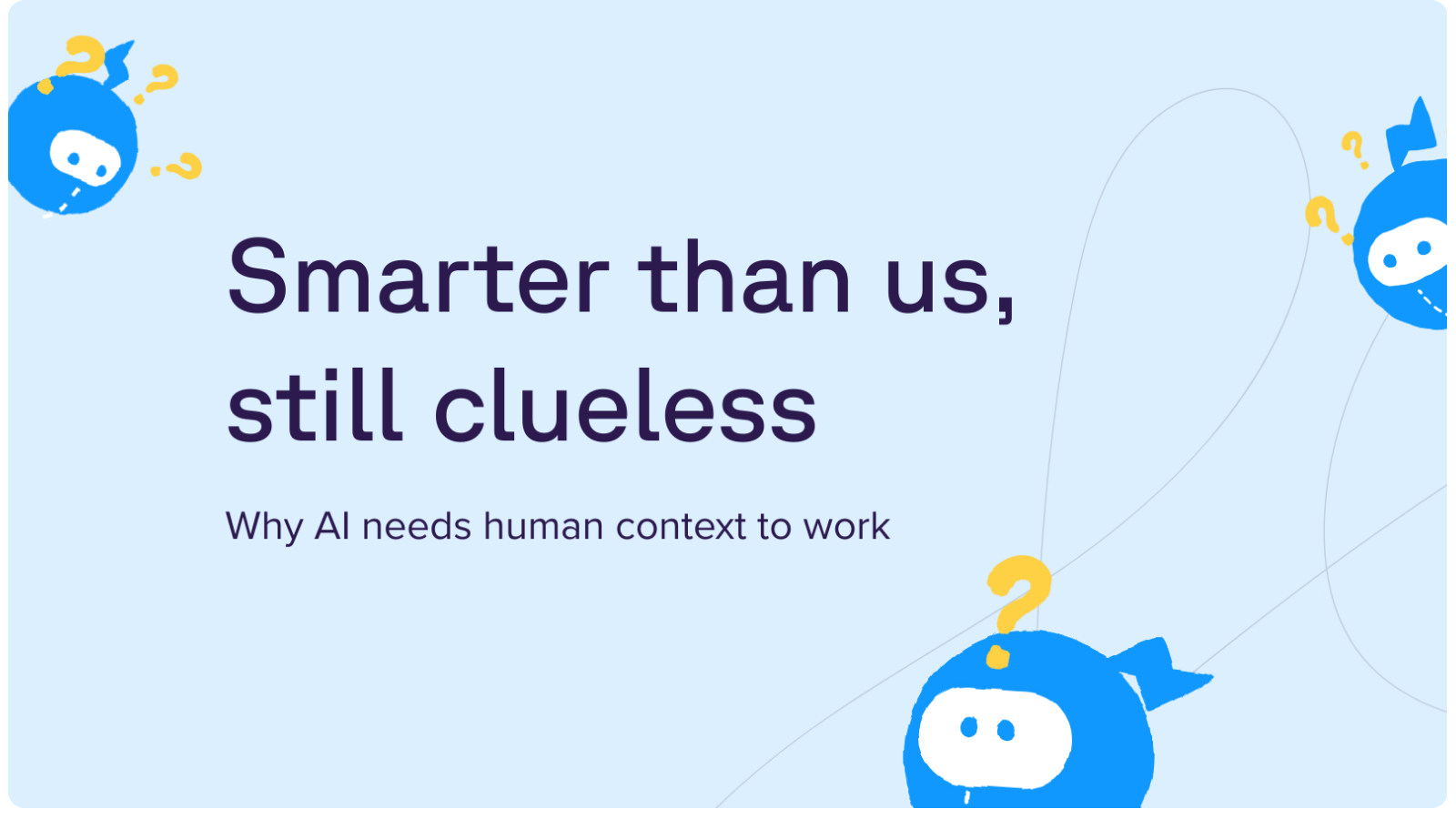Imagine hiring a total genius.
No, not just any genius — one who never sleeps, never takes PTO, and reads faster than a thousand analysts combined.
(Yes, this is about AI.)
Now imagine feeding that genius your CRM full of half-assed fields, a Google Doc called “Q3_FINAL_v7,” and a Slack thread where Sales, Marketing, and CS are mostly just arguing in GIFs of The Office.
Said genius doesn’t revolutionize your business. No, it hallucinates it.
That’s where we are with AI. But it won't always be like this.
The shift no one wants to name
The moment machines become better than people at execution — at analysis, forecasting, call summarization, routing, you name it — the job of GTM teams changes forever.
It’s not “what do I do?” anymore. It’s “what important things about context do I know that I can feed the machine so it can do it?”
If that feels existential... I'm afraid to say that's because it is.
Context is everything
Across every GTM function, the bottleneck is no longer “smarts.” The cost of intelligence is truly trending towards Zero.
The real belle of the ball now is context.
- For Sales: AI can draft some banger emails if it knows the real objections to your product, the messy deal history, the unstated power dynamics, and is given the proper framework.
- For Marketing: AI can segment the hell out of an audience, but only if it has clean signals, reliable intent data, and crystal-clear boundaries for messaging.
- For Customer Success: AI can flag churn like nobody's business, but only if it sees the right usage breadcrumbs historically, and knows what actually counts as risk in your business, with your customers, with your product, with your industry.
- For Ops: AI can optimize flows, but only if you curate the semantics, lineage, and sales process you need. It can’t understand on its own.
In other words: the quality of AI’s output is now directly proportional to the quality of the context we give it.
Why GTM can’t dodge this
You may have read this week that 95% of enterprise AI pilots fail, not because the models are weak, but because the orgs can’t adapt their data and process layer. (MIT calls this the GenAI Divide.) But that's not the end of this.
- By 2027, half of all business decisions will be supported or automated by agents. That doesn’t make your role irrelevant. It makes your role different. That's 16 months from now.
- And with 80–90% of enterprise data unstructured, the GTM org that learns to tame and route that context fastest wins.
There's a new job description for all of us
Yesterday, GTM was about:
- Executing a playbook
- Filling in the dashboards
- Owning the “human touch” at each step
Tomorrow, GTM will be about:
- Framing the problem
- Curating the right context with experience and cleverness
- Deciding the boundaries for the machine
- Letting it rip
One might argue that that’s not less human, rather... it's more. Because machines can’t tell you what matters. Only we — erm us? — people can.
A redefinition of GTM identity
Though we are an operational platform, this is far greater an operational story. This is everyone story.
- Sales is set to become not just persuaders, but translators of customer nuance into machine-readable context.
- Marketing evolves from campaigners into architects of signal — what the machine should even notice.
- CS becomes not just relationship managers, but custodians of experience data that turns churn prediction into retention.
- Ops becomes not just admins, but the semantic layer of the business — the rules and meanings AI can’t guess.
Ultimately, as the machine gets smarter than us at the tasks, the value of our roles moves upstream.
From doing the work, we'll be deciding what work should mean.
From running the processes ourselves, we'll be defining the assumptions and rules that our processes must run on.
From individual action, we'll move to stewardship of a new, collective AI-and-human partnership.
And while AI may know a lot — and increasingly know more — it won't know the finer details.
And thankfully for us, those details mean quite a lot.

